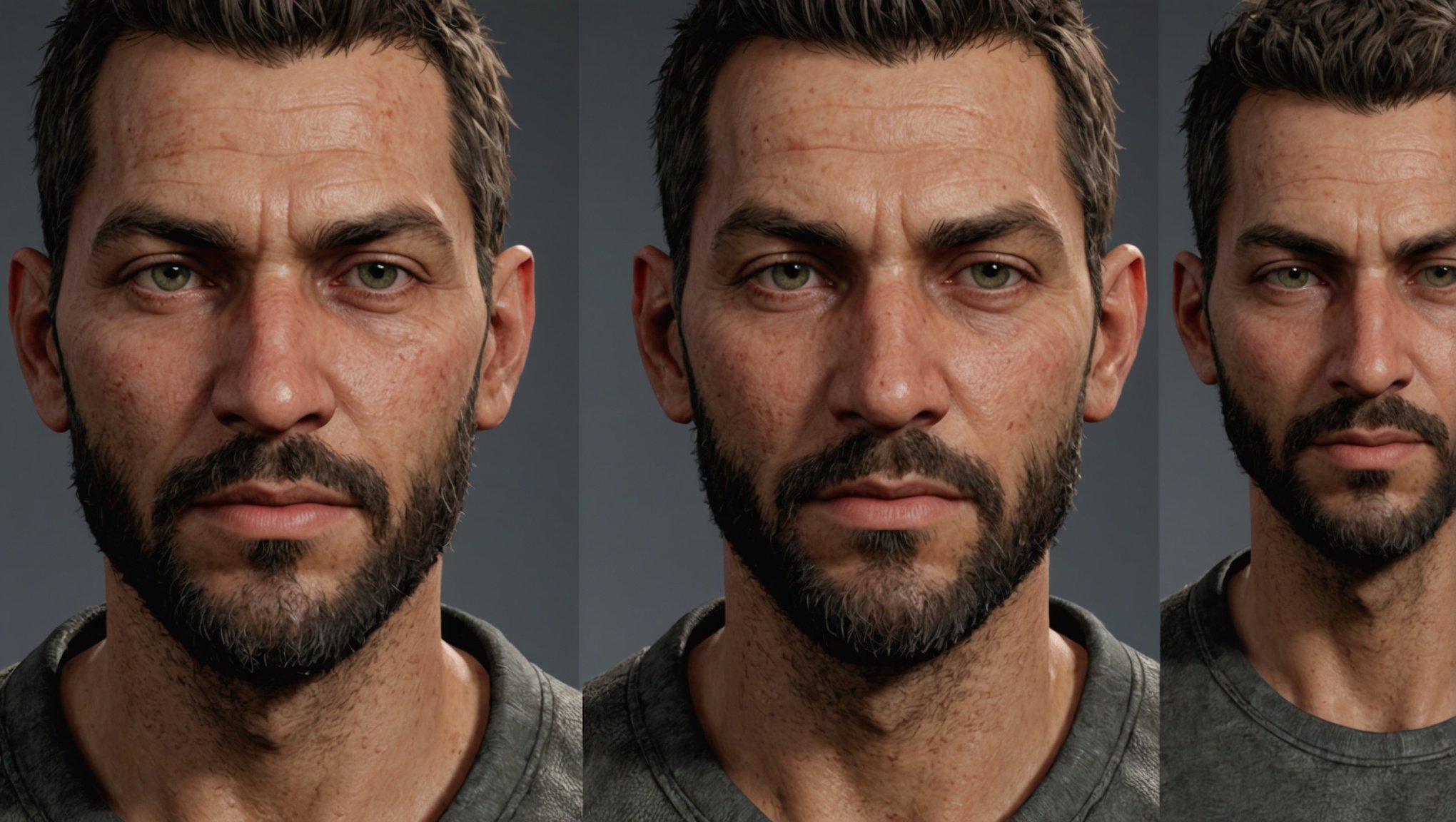Unlocking Ultra-Realism: Proven Techniques for Crafting Realistic Character Textures in Next-Gen Video Games
The Pursuit of Realism in Gaming
The gaming industry has long been driven by the pursuit of realism, and one of the most critical aspects of achieving this is the creation of realistic character textures. In next-gen video games, the bar for visual fidelity has been raised significantly, and game developers are continually pushing the boundaries of what is possible.
The Importance of Realistic Textures
Realistic character textures are not just about aesthetics; they play a crucial role in immersing the player in the game world. When characters look and feel real, it enhances the overall gaming experience. For instance, in games like “The Last of Us” or “God of War Ragnarok,” the detailed textures and realistic character models make the story more believable and engaging.
Also read : Essential Elements for Crafting a User-Friendly Inventory System in Complex RPGs
Advanced Techniques in Texture Creation
Several advanced techniques are being used in game development to create ultra-realistic character textures.
Use of Machine Learning and AI
Machine learning and artificial intelligence (AI) are revolutionizing the way textures are created and optimized. For example, diffusion models, which are a type of generative model, can be used to generate highly detailed textures in real time. These models learn from vast datasets of real-world images and can produce textures that are almost indistinguishable from real-life counterparts.
Have you seen this : Essential Elements for Crafting a User-Friendly Inventory System in Complex RPGs
- **Data Collection**: Gathering a large dataset of high-resolution images of various textures.
- **Model Training**: Training a diffusion model on this dataset to learn the patterns and details of real-world textures.
- **Real-Time Generation**: Using the trained model to generate textures in real time, allowing for dynamic and adaptive texture rendering.
4D Gaussian Splatting
Another innovative technique is 4D Gaussian Splatting, which is used for generating 4D content. This method involves aligning geometry, texture, and motion at the pixel level, creating highly realistic and detailed textures. For instance, the DreamGaussian4D framework uses this technique to generate 4D videos from single images, offering enhanced control and realism.
The Role of Game Engines
Game engines like Unreal Engine play a pivotal role in creating and rendering realistic character textures.
Unreal Engine Capabilities
Unreal Engine, with its advanced features such as ray tracing, path tracing, and dynamic lighting, allows game developers to create highly detailed and realistic textures. For example, the Cyberpunk 2077 Ultra Plus Engine Control Panel mod demonstrates how these features can be optimized to improve path tracing performance, reduce edge noise, and enhance overall visual quality.
| Feature | Description |
|---|---|
| Ray Tracing | Accurate simulation of light behavior, enhancing realism. |
| Path Tracing | Advanced lighting technique for detailed, realistic lighting effects. |
| Dynamic Lighting | Real-time lighting adjustments based on player actions and environment. |
| Edge Noise Reduction | Techniques to minimize edge noise, especially on skin and hair textures. |
| Real-Time Optimization | Auto-tuning visual quality to maintain a consistent frame rate. |
Practical Insights and Advice
For game developers looking to create ultra-realistic character textures, here are some practical insights and advice:
Learning from Real-World References
One of the most effective ways to create realistic textures is to learn from real-world references. Observing how light interacts with different materials in the real world can provide invaluable insights.
- **Observation**: Study how different materials reflect, absorb, and scatter light.
- **Reference Gathering**: Collect high-quality images of various textures to use as references.
- **Implementation**: Use these references to create detailed and accurate texture models.
Community Feedback and Testing
Engaging with the gaming community and gathering feedback is crucial for refining and improving textures. For example, the community feedback on mods like the Cyberpunk 2077 Ultra Plus Engine Control Panel has been instrumental in identifying and fixing various visual issues.
Balancing Performance and Quality
Achieving ultra-realism often comes with a performance cost. Balancing visual quality with performance is essential to ensure a smooth gaming experience.
- **Performance Monitoring**: Continuously monitor the game's performance during development.
- **Optimization Techniques**: Use various optimization techniques such as level of detail (LOD) and dynamic resolution scaling.
- **Player Feedback**: Gather feedback from players to identify areas where performance can be improved without compromising quality.
Real-World Applications and Examples
Several games have successfully implemented these techniques to create highly realistic character textures.
Cyberpunk 2077
Cyberpunk 2077 is a prime example of how advanced techniques like path tracing and ray tracing can be used to create ultra-realistic textures. The game’s detailed character models and environments are a testament to the power of these technologies.
God of War Ragnarok
God of War Ragnarok, with its stunning visuals and detailed character textures, showcases the capabilities of Unreal Engine in creating immersive gaming experiences. The game’s use of dynamic lighting and advanced texture rendering makes the characters and environments look incredibly realistic.
Creating ultra-realistic character textures in next-gen video games is a complex but rewarding process. By leveraging advanced techniques such as machine learning, 4D Gaussian Splatting, and the capabilities of game engines like Unreal Engine, game developers can craft textures that immerse players in the game world like never before.
As demonicneon from the Reddit discussion points out, “There’s such a thing as diminishing returns though. Going from 2D to 3D is a huge change. Going from jagged polygons to smooth realism is a huge change. Going from 1000 pores to 1500 pores is not.” However, the pursuit of realism is not just about minor improvements; it’s about creating a believable and engaging gaming experience that draws players in and keeps them invested.
In the words of a game developer, “The key to creating realistic textures is not just about the technology; it’s about understanding how light and materials interact in the real world and translating that into the game.” By combining technological advancements with real-world learning and community feedback, game developers can unlock the full potential of ultra-realism in video games.











